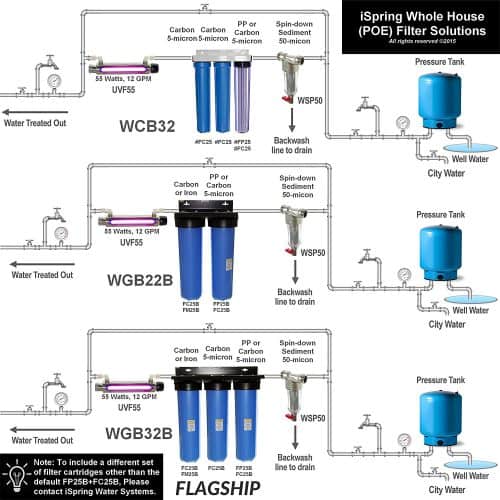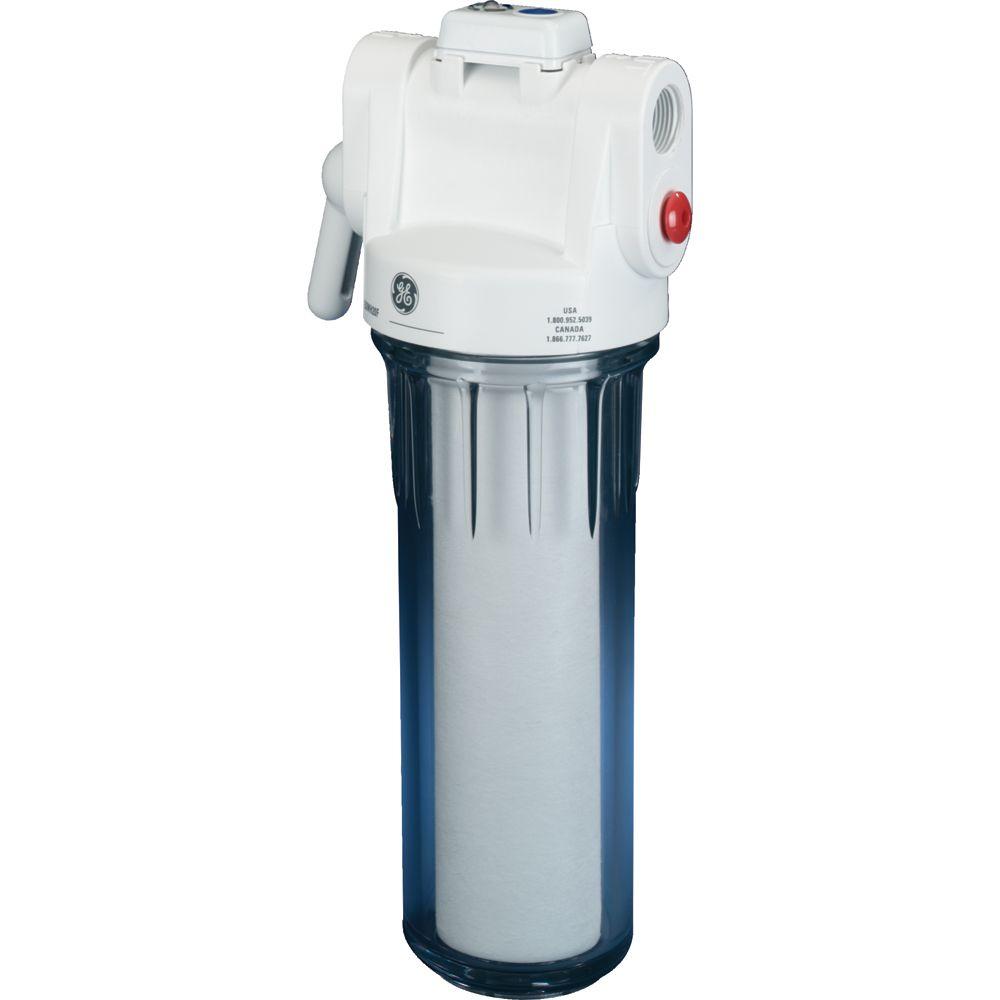Table Of Content

Depending on the water testing results, you have to choose the right micron rating for your filters. The best filters available will block anything larger than 0.35 microns. As you might expect, they are more expensive than the filters that block only particles larger than 1 micron.
The capacity
Those filters need to be replaced every two months or so, but they’re contained in screw-on canisters so replacing them isn’t hard. The included filters handle things like sediment and rust, while the more advanced option also reduces chlorine and removes unpleasant tastes and odors. Otherwise, the filters usually last about three months and can process up to 16,000 gallons before you need to replace them. Filter replacement is easy, because the filter housing includes a bypass switch and a shutoff valve, and the filter is held in a clear screw-on container. Many whole house water filters offer water softening as a byproduct of filtering. Water softening passes your home’s water through a synthetic medium to remove minerals such as calcium, iron, magnesium and others.
Best for City Water
However, GH Institute Kitchen Appliances and Innovation Lab Director Nicole Papantoniou has only had to change the filter once every seven months. Former GH Institute Chief Technologist and Executive Technical Director Rachel Rothman used this water pitcher in her five-person household. She loved the taste of the water and that she did not have to constantly change the filter. This filter is able to kill any remaining bacteria, viruses, or microorganisms that might have escaped the previous filters.

Best Whole House Water Filters [Reviews + Buyer Guide]
While the private well system comes with a UV filter, neither of the municipal home filters includes it. A UV filter on your city water is a great idea if you live in an area where your water supply can be compromised by weather or other intrusive issues. The municipal system is available for small homes with a capacity of 600,000 gallons prior to filter replacement. The larger home unit is rated to handle up to 1,000,000 gallons of water per filter.
Our Top Picks for Best Whole House Water Filter Systems
UV filtration systems are typically installed as a final stage after a whole house water filter system. “I use filtered water for absolutely everything from cooking to coffee-making, so tabletop water filters can’t keep up with my use,” she said. “With this one, there's no need to refill any carafes or tanks.” It has a high flow rate, however it requires installation.
G.E. Appliances Whole House Water Filtration System Model #GXWH04F
These systems are also called Point Of Entry (POE) systems because they are usually installed before the water reaches your heater, thus filtering both the cold and the warm water. This means that every time you open a faucet, filtered water will come out of it. Actually, filtered water will be delivered to your shower, washing machine, and even your toilet. Even though all models work in the same way, the presence or absence of additional filters will influence the types of contaminants a certain filter will remove from the water.
Best Water Filter Pitcher to Deactivate Bacteria
It’s suitable for homes with up to 6 bathrooms, so one system is inclusive to everyone. We liked the fact that the Kind system’s flow rate was just 5 GPM short of the SpringWell CF’s highest-flow system, but we didn’t have to pay to upgrade for this privilege. To change the filters, all you have to do is drain the water in the system and twist off the housings. The SoftPro Water Systems Upflow Carbon Filter also boasts a seven to 10-year lifespan and easy-to-change filter media.
The Sediment Filter removes sand, rust, and dirt, while the KDF and the ACB eliminate different chemical elements that are damaging to the water. The estimated time for the filter to have clean water for the whole house is 30 minutes. It is difficult to determine the lifespan of the filters because it depends on the water quality and the number of people in the family.
How to install a whole house water filter?
Oxidation-reduction is the best method to reduce heavy metals from water. It is a process where an oxidant is added to the water (through the filter media), which converts the dissolved particles to a more filterable solid, which is then captured by the filter material. Unlike more extensive systems, the iSpring will not reduce water consumption and produces up to 15 GPM output to keep your water pressure up and output high.
Meanwhile, the sediment filter greatly removes chloramine, sand, dirt, and silt from your water. Both qualities will help keep your appliances and pipes clean while purifying your water simultaneously. This does not denote the physical size of the whole house water filter but rather the capacity that the filter puts out in gallons. Some models filter out a million gallons of water while others filter 100,000 gallons as denoted above. For example, the Aquasana EQ-1000 is one of the high-capacity water filters. You should, however, note that most water filters with a big capacity are also large in size.
This filter comes in a small size but it is highly effective in eliminating dust and sediments from water. Furthermore, the Culligan softener helps to remove any scale that may settle in water. To ensure that the filter is highly efficient, it contains a stainless-steel connection. The obvious answer is to tell you that you need a whole house water filter system if there are issues with your water, such as discoloration, odor, or taste.
9 Best Water Filters of 2024, Tested & Reviewed by Experts - Good Housekeeping
9 Best Water Filters of 2024, Tested & Reviewed by Experts.
Posted: Mon, 15 Apr 2024 07:00:00 GMT [source]
Lastly, your supply is deodorized with the activated carbon filter to improve its taste and smell. The carbon also reduces chlorine levels and takes care of turbidity, which is the clarity of your water. Whole house water filters treat water for the entire home, removing contaminants and improving taste. Water softeners primarily focus on reducing water hardness, using salt pellets in the process, and require more maintenance than whole house filters. Reverse osmosis systems use a membrane to separate purified water from contaminants, resulting in wastewater discharge and often requiring more installation space than whole house filters.
The SpringWell WS1 uses an improved form of greensand that does not require pot perm and instead can be maintained with regular water. Salt is used in all water softeners to regenerate the media, which involves flushing it with salt water to maintain the proper chemical composition for ion exchange to happen. The more often a softener regenerates, the more salt it uses and the more water it wastes.
Another thing to look out for is if there are some tools to help you install the water filter when buying it. While these water filters can eliminate a significant percent of contaminants from water, only reverse osmosis systems can remove 100% of the harmful elements in water. The overall quality of water or a test from the lab will determine if you need to add such a system to your home. Whole house filter systems are installed after the water meter and before the main entry into the home. While it may seem better to use this approach, there are some downsides. For example, charcoal filtration can remove chlorine, which helps prevent contamination of the water supply form corroded piping.

No comments:
Post a Comment